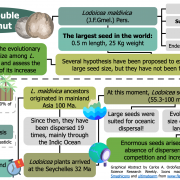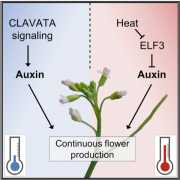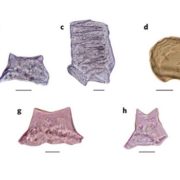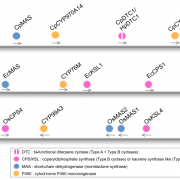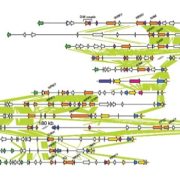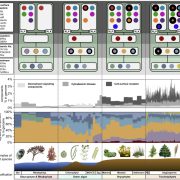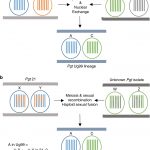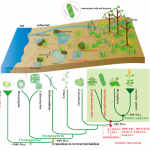A ligand-independent origin of abscisic acid perception ($) (PNAS)
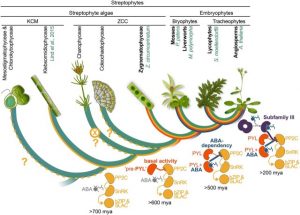 The origins of ABA signaling have long been puzzling. Green algae make ABA but don’t respond to it, and ABA receptors have appeared to be missing from their genomes. Reccently, Sun et al. identified a gene encoding an ortholog of PYL family of ABA receptor proteins in the transcriptome of an alga from the Zygnematophyceae clade (closest relatives to land plants), and here they asses it functionally. They like other researchers note the similarity of the Zygnematophyceae algae to land plants and their apparent predisposition to life on land. Their key finding is that in these algae PYL-like proteins interact with PP2C-like proteins, but in an ABA-independent manner. They propose, “that co-option of ABA to control a preexisting PP2C-SnRK2-dependent desiccation-tolerance pathway enabled transition from an all-or-nothing survival strategy to a hormone-modulated, competitive strategy by enabling continued growth of anatomically diversifying vascular plants in dehydrative conditions.” (Summary by Mary Williams) Proc. Natl. Acad. Sci. USA
The origins of ABA signaling have long been puzzling. Green algae make ABA but don’t respond to it, and ABA receptors have appeared to be missing from their genomes. Reccently, Sun et al. identified a gene encoding an ortholog of PYL family of ABA receptor proteins in the transcriptome of an alga from the Zygnematophyceae clade (closest relatives to land plants), and here they asses it functionally. They like other researchers note the similarity of the Zygnematophyceae algae to land plants and their apparent predisposition to life on land. Their key finding is that in these algae PYL-like proteins interact with PP2C-like proteins, but in an ABA-independent manner. They propose, “that co-option of ABA to control a preexisting PP2C-SnRK2-dependent desiccation-tolerance pathway enabled transition from an all-or-nothing survival strategy to a hormone-modulated, competitive strategy by enabling continued growth of anatomically diversifying vascular plants in dehydrative conditions.” (Summary by Mary Williams) Proc. Natl. Acad. Sci. USA


